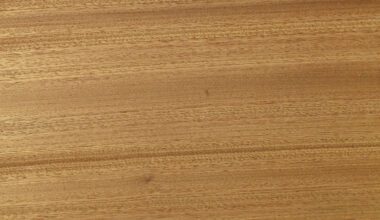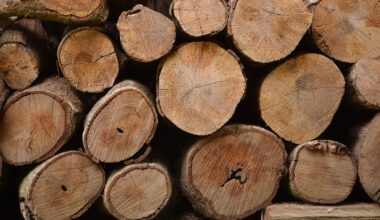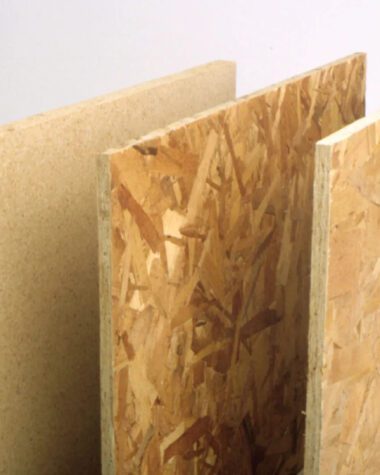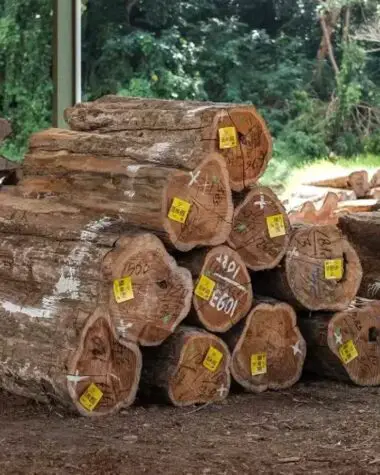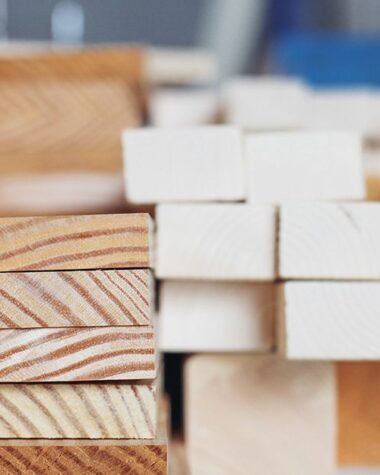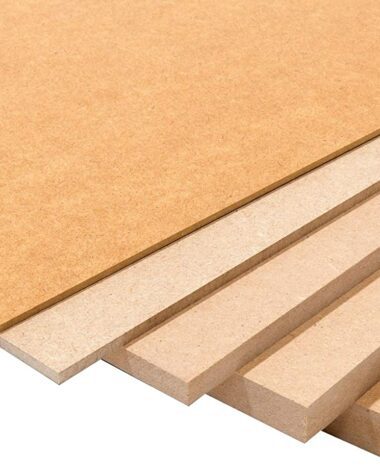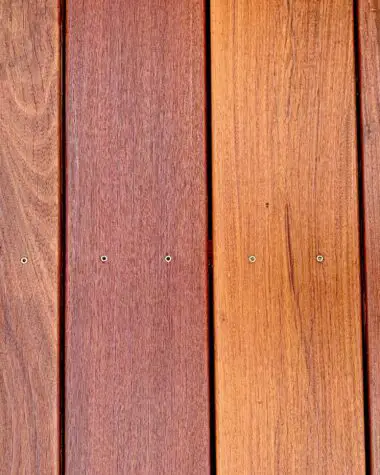There are several types of manufactured wood. One of these is particleboard, also called chipboard or low-density fiberboard (LDF). Specifically, it is the product of combining wood chips, sawdust, or sawmill shavings through urea formaldehyde, a glue for binding wooden chips.
How is Particleboard Processed?
This manufactured wood type is created through compressing wood particles. In this section, I have outlined particleboard’s basic manufacturing process to better understand how it works.
Chipping
Before proceeding in this stage, the timber may need to be debarked to avoid the chipper knives from becoming dull. Once done, the wood is then chopped to a specific length and fed into a chipper.
Meanwhile, waste from planers and similar devices is milled to the necessary particle size. Chips’ surfaces and cores are frequently made differently and stored separately.
Drying
It is essential to lower the moisture content of wood, especially if it is freshly cut. Thus, in manufacturing particleboard, wood chips are put through flash drying to lower their moisture content to around 2.5 percent. Flash drying requires only a little lower drying temperatures than a rotary dryer. Chips from the core and the surface may have slightly differing moisture content.
Gluing
After the drying process, the wood particles must undergo the gluing procedure using synthetic resin and other necessary chemicals, such as a hardener or wax emulsion. The adhesive ratio to chips must be precise and may change because surface chips frequently contain more glue.
Any unique requirements, such as anti-fungal or flame retardant treatments, can be added. The qualities, including moisture resistance, can also be influenced by the glue employed.
Mat Forming
Dropping wood chips onto caul plates or belts creates a mattress of adhesive-coated chips. Depending on the mat-forming gear used, this will either result in layered mats or consistently graded densities.
Pressing
Pre-compression is frequently done, and the mat is further compressed in a high-pressure and temperature press that can be multi-daylight, single-daylight, or continuous to a predetermined thickness (typically around 5mm).
Trimming and sanding
Each panel is cut to the correct thickness and then sanded to create a smoother finish after cooling.
Types of Particleboard
Particleboard can undergo many changes and variations to improve its qualities in terms of moisture resistance, fire resistance, or sound insulation. Some of the types of particleboard are listed below.
Single-layer particle board
Wood particles of uniform size are crushed together to create a single-layer particle board. It is a flat, solid board that can be painted, unlike veneered or plastic laminated. Single-layer particle boards are appropriate for inside use.
Three-layer particle board
A layer of huge wood particles is sandwiched between two layers of very small, extremely dense wood particles to create a three-layer particle board. The outer layer contains more resin than the inner layer does. A three-layer particle board’s smooth surface is perfect for painting.
Graded-Density particle board
A layer of coarse wood particles is sandwiched between two layers of tiny wood particles to make a graded-density particle board. Cabinets and other wooden furniture are made using this kind of particle board.
Melamine particle board
Melamine particle board is created by applying high heat and pressure to the surface of a decor paper that has been melamine-infused. A melamine particle board’s wood particles are combined using wax emulsion and melamine-urea formaldehyde resin.
Veneered particle board
Particle board that has been veneered has a thin veneered wood slice bonded to its surface. This particle board simulates real wood. Additionally, compared to a standard particle board, a veneered particle board is more resistant to warping.
Laminated particle board
A laminated particle board is created by covering a piece of normal particle board with a thin laminate sheet. A laminate sheet increases the particleboard’s resilience while also enhancing its appearance.
Cement-bonded particle board
Magnesium-based cement or portland cement is the bonding agent in cement-bonded particle boards. The composition is 60% cement and 20% hardwood particles, including shavings, sawdust, and wood chips. Water makes up the remaining 20%.
This kind of particleboard is resistant to rot, termites, dampness, and fire because it contains cement. Due to their great moisture resistance, they can produce fake ceilings, walls, and long-lasting covers for concrete floors and walls in structures in high-humidity zones.
Other Wood Types You May Be Interested In
Find out more about the wood types that belong to manufactured woods. Check out the list below.
Conclusion
To conclude, particleboard is just one of the types of engineered wood that you must consider. The various procedures it undergoes in manufacturing tell that it offers features similar to solid wood. As a result, particleboard has variations that cater to the needs of woodworkers in terms of quality and resistance to any damage. Choosing particle board as one of the wood types to consider is a great way to explore the versatility of wood for any purpose.

